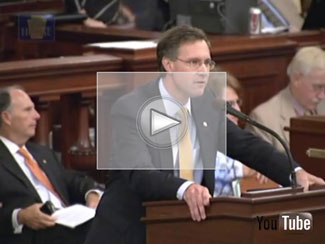Gov. Tom Corbett delivered his budget speech at midday to a joint assembly of the House and Senate, suggesting “Don’t read my lips; read my budget.” For a full text of his speech, click here:
http://www.scribd.com/doc/50290282/Corbett-Budget-Speech
In his opening remarks, Corbett’s presented an overview of his budget including “ . . The substance of this budget is built on four core principles: Fiscal discipline, limited government, free enterprise and reform. . . ” Corbett’s fiscal year 2011-12 budget totals $27.3 billion, but no new taxes.
There has been much discussion concerning the economic woes facing school districts across the state. In his budget address, the Governor supports letting the taxpayers decide . . .
” . . . Now, we all know that there’s an elephant in the room when it comes to education funding: The property tax. Too often we have seen school boards raise property taxes to avoid hard and necessary choices. It’s human nature. When you’re spending someone else’s money it’s easier to say yes than no. I believe any new property tax increases beyond inflation should be put on the ballot. If school boards can’t say no, maybe the taxpayers will. Let’s listen to the taxpayers on this one. . . “
The governor takes on the teacher unions with teacher furlough remarks,
” . . . At the same time we need to give school boards some breathing room. There are too many mandates that tie the hands of local school boards. This administration is committed to curbing these mandates, including one that violates every law of economics: the inability to furlough employees when there isn’t the money to pay them. It puts the entire enterprise of public education at risk. . . “
Specifically, how did the Department of Education fair in Corbett’s budget? A quick review indicates that education will receive an expected major cut in funding. The proposed cuts to education include a 10 percent cut in basic education (K-12), which is a loss of $550 million across the state. The budget also eliminates all $260 million in grants that are being given this year to school districts to invest in learning, including pre-K, full-day kindergarten and class-size reduction in kindergarten through third grade.
In his speech, Corbett asked public school officials to consider pay freezes; calculating that each year of this cost-saving measure would save school districts $400 million. Corbett said that he was returning the state education funding to the pre-stimulus funding level.
Addressing the state workers, unions, pensions and collective bargaining, Corbett’s approach was direct –
” . . . In Pennsylvania, we will be looking for salary roll backs and freezes from state employees as well as asking them to increase their contributions for healthcare benefits. We also need to start the conversation about the necessary repairs to our public retirement system.
I want to be clear about this to our union leaders. Collective bargaining doesn’t mean some ill-defined middle ground. It means finding the spot where things work. In this case it is going to have to work to the good of the taxpayer or it’s not going to work at all. Let’s find that place and meet there. Let’s keep things working. Neither side need lose for the taxpayers to win. We need to act on our financial challenges now, before they act on us. . . “
Although Corbett did not use the word, ‘voucher’ in his budget address, he was specific about his desire for school choice . . .
” . . . Pennsylvania needs to re-think how best to educate our children. We simply can’t work within a broken system. We need to change the whole system. We need a new set of priorities: child, parent, and teacher – and in that order. What we have now in too many places are schools that don’t work. Families are trapped in failing schools, or schools that are a bad fit. We need to develop a system of portable education funding; something a student can take with him or her to the school that best fits their needs. One size does not fit all. But as it now stands, not all get to choose. Let’s give them school choice. . . “
During his budget address, the Governor referred to the ‘Budget Dashboard’ available online. The dashboard is on the state website, is user-friendly and provides an easy access for information of individual state agencies. Here is a link to that reference:
http://www.portal.state.pa.us/imageserver/budget2011/GBD_2011.html
If you are interested, here is a link to the entire budget — all 1,182 pages. If you decide up upload the file, remember this is very large file and suggest patience.
http://www.scribd.com/doc/50277977/2011-12-Budget-Document
